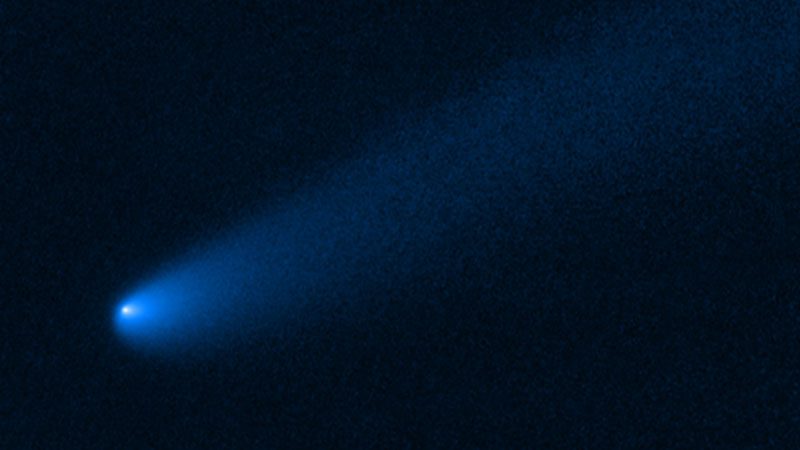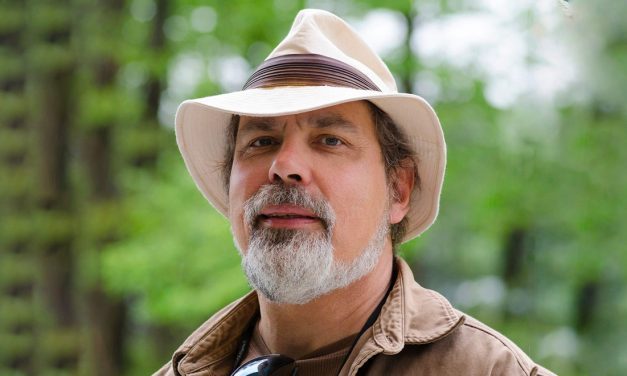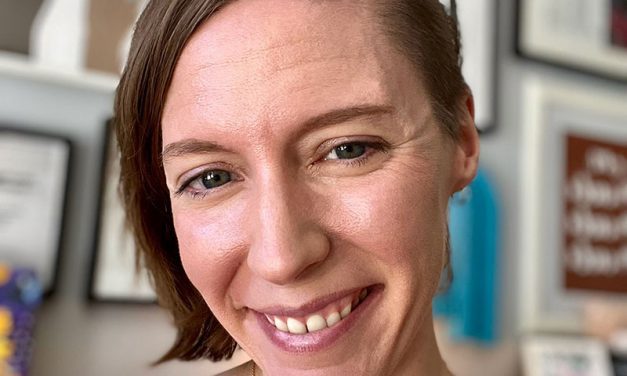
Alumnus looks deeply into space
Probing the Centaurs
By Glen Rosales
NASA’s newly employed James Webb Space Telescope is reaching ever deeper into the great depths of the universe and its infrared eyes seem to deliver fresh insight into the cosmos every few weeks.
Its ability to peer deep into space from its location nearly 1 million miles from Earth not surprisingly had astronomers eagerly lining up for time on the new observatory.
Michael DiSanti, PhD, who earned his undergraduate and master’s degrees from The University of New Mexico in 1978 and 1980 respectively, has been among those who have had a chance to work on a project using the Webb Telescope.
“It’s been a long time coming and everybody was submitting proposals,” said DiSanti, who is a staff scientist in the Solar System Exploration Division at the NASA-Goddard Space Flight Center in Greenbelt, Md. “I was in on three different proposals.”
Only one of the three was selected, a proposal spearheaded by colleague Adam McKay, PhD, a professor in the Department of Physics and Astronomy at Appalachian State University in Boone, NC.
Webb designers have given it a five-year mission window with a hopeful ultimate goal of 10 or more years of use, meaning astronomers have a limited time frame to cram in as many projects as possible. “So each proposal was weighed on its potential value to advance science that cannot be done from Earth’s surface,” DiSanti said.
“Ground-based (telescope) time is very competitive, but not like Webb,” DiSanti said. “There is a lot of money involved, and resources.”
DiSanti’s Webb project is to study Centaurs, which he describes as a “dynamical class of small bodies orbiting the Sun between the orbits of Jupiter and Neptune.”
The Centaurs “are transitioning from orbits in the scattered disk of small solar system bodies beyond Neptune to those of short-period comets — also referred to as ‘Jupiter-Family Comets’ — that enter the terrestrial planet region closer to the Sun where their activity is dominated by release of water, the most abundant ice in most comets,” he said.
“Gas release has been observed from some Centaurs using ground-based and space-based telescopes, including the Hubble Space Telescope. However, measuring chemicals that vaporize at the cold temperatures beyond Jupiter’s orbit — namely carbon monoxide or carbon dioxide — with ground-based facilities has proved challenging (for CO) or impossible (for CO2). And the presence of water has been found in just a single Centaur,” DiSanti said.

The study uses Webb’s Near Infrared Spectrograph to obtain observations of H2O, CO2, and CO in a targeted suite of active Centaurs, and includes sensitive searches for water ice absorption in the coma,” DiSanti said.
The telescope is uniquely suited for this study because it “can measure the strongest bands of H2O and CO2, neither of which can be observed from the ground because they are totally obscured by Earth’s atmosphere, and also CO, all with unprecedented sensitivity. Obtaining an inventory of H2O, CO2, and CO in active Centaurs is vital to understanding their composition and activity,” he said.
DiSanti grew up in the small village of San Cristobal north of Taos, adopted along with his brother by acclaimed folk singer and New Mexico folk music ethnologist Jenny Vincent and her husband Craig, after their father died.
DiSanti grew up in the small village of San Cristobal north of Taos, adopted along with his brother by acclaimed folk singer and New Mexico folk music ethnologist Jenny Vincent and her husband Craig, after their father died.
He left the wide-open starry skies of northern New Mexico to study astrophysics and chemistry at UNM and stayed for a master’s in physics.
DiSanti went to the University of Arizona for his PhD. His thesis looked at ionized water vapor in comet Halley.
Since then, his focus has remained on comets, those streaking lumps of ice, rock and dust that contain the record of the conditions of the early solar system.
That’s why closer study of Centaurs is his focus now — because of the clues they provide as to how solar systems are formed.
“What we can learn from comets, including Centaurs, can teach us about chemical conditions in regions that cannot be observed directly,” he said. “There’s a cottage industry of chemical modeling of disks around stars. And yet we can’t really see directly into the cold disk midplane region, as there’s a lot of material blocking the wavelengths of interest. So that’s another important aspect of comets. They provide a means of probing the once heavily shielded midplane region of our solar system’s own protoplanetary disk.”
Centaurs, much like Pluto, spend billions of years in the Kuiper Belt, a flattened distribution of solar system bodies beyond Neptune, before they get kicked into closer trajectories.
“It’s mostly primitive material remaining from the formation epoch,” DiSanti said. “Centaurs are part of the puzzle. Exactly how they fit, we don’t yet know, but the Webb study is expected to provide key insights.”
“Four of the six targeted Centaurs have already been observed through Webb, and analysis is ongoing,” DiSanti said. Publication of initial results is expected sometime in 2023.
Spring 2023 Mirage Magazine Features
In a Place Where We Can Celebrate
Diné filmaker Shaandiin Tome turns her lens to native people…
Read MoreAnne Hillerman Carries On A Family Tradition
UNM Alum expands on her father’s literary legacy…
Read MoreCreating a Home for the Arts
UNM’s second-largest college is poised to move onto Central Avenue…
Read MoreKnow What You Want and Persevere
Triple alumna followed her dream from Vietnam to a doctor of nursing…
Read MoreProbing the Centaurs
NASA’s newly employed James Webb Space Telescope is reaching ever deeper…
Read MoreMy Alumni Story: Erin Barringer-Sterner
When I was in high school, my family relocated to Rio Rancho…
Read More






